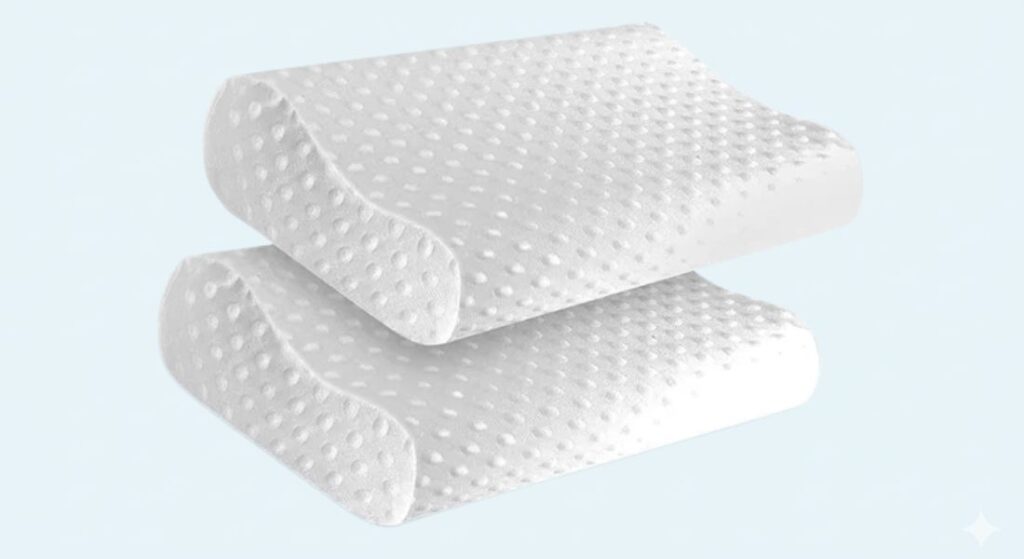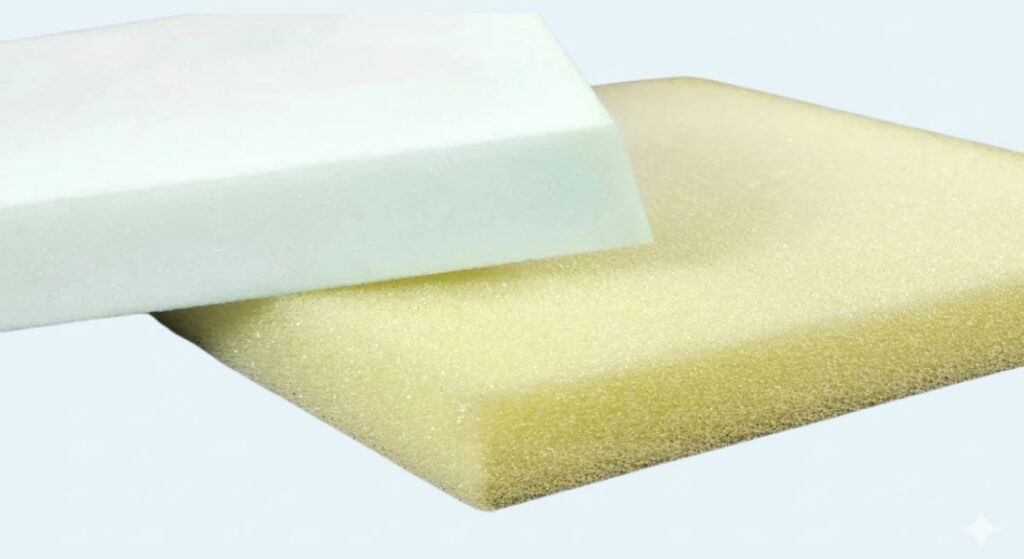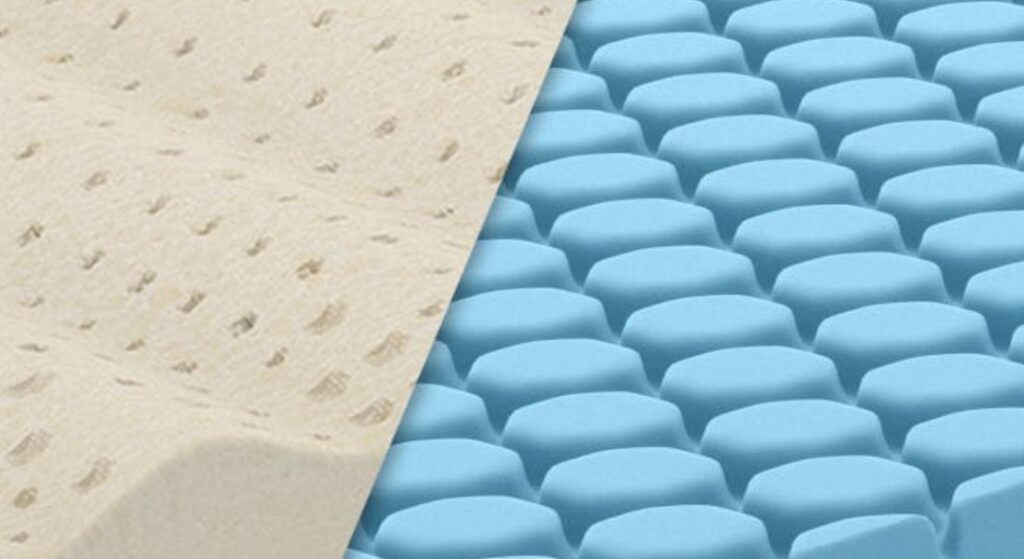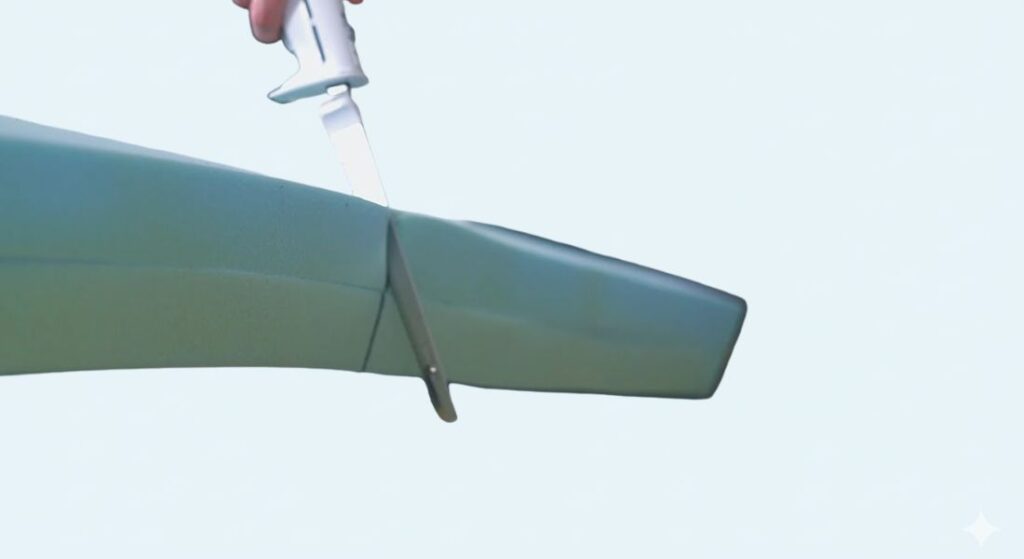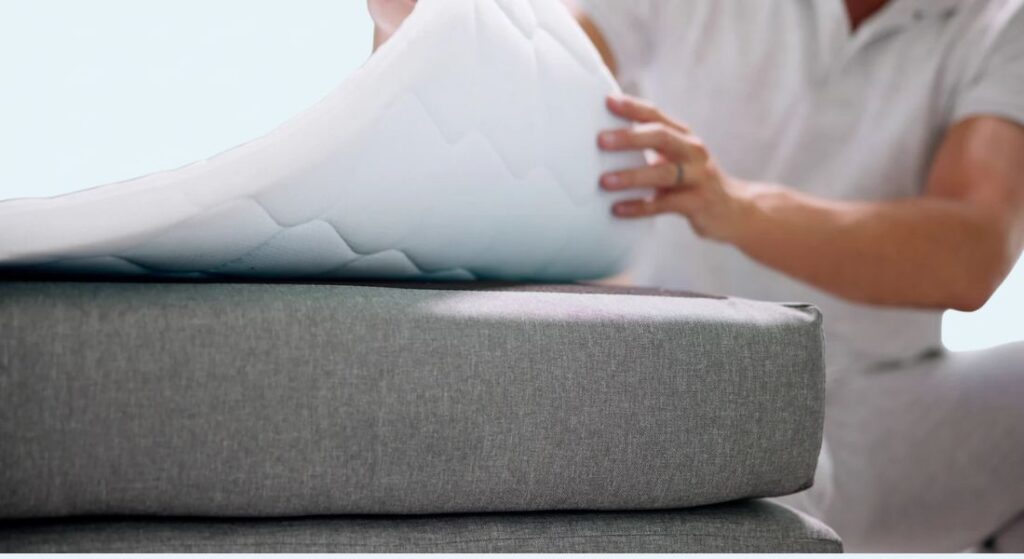Your memory foam pillow feels sticky, smells faintly sour, and you’ve noticed yellow stains spreading from the center. You reach for the washing machine—but stop. Unlike cotton or polyester pillows, memory foam disintegrates when blasted with water and heat. How to deep clean memory foam pillow properly is critical: 87% of owners damage their pillows within the first year by using traditional washing methods. The wrong approach melts the foam’s responsive structure, leaving permanent flat spots that ruin neck support. This guide reveals the exact moisture-controlled techniques to eliminate sweat, dust mites, and odors while preserving your pillow’s 3–4 year lifespan. You’ll learn why vinegar baths beat detergent soaks, how to dry foam in half the time, and when to replace versus rescue your pillow.
Why Machine Washing Destroys Memory Foam Pillows
Memory foam’s open-cell structure traps body oils and moisture like a sponge—but this same feature makes it vulnerable to improper cleaning. Agitation in washing machines tears the delicate polyurethane cells, causing irreversible crumbling. Heat from dryers melts the viscoelastic layers responsible for pressure relief, leaving hard, unusable lumps. Even wringing out excess water compresses the foam beyond its rebound capacity, creating permanent flat spots that fail to support your neck. Most pillows absorb 200ml+ of sweat annually; attempting standard washing turns this moisture into a catalyst for structural collapse. The result? A sagging, lumpy pillow that forces you into replacement within months instead of years.
Critical Supplies for Safe Memory Foam Cleaning
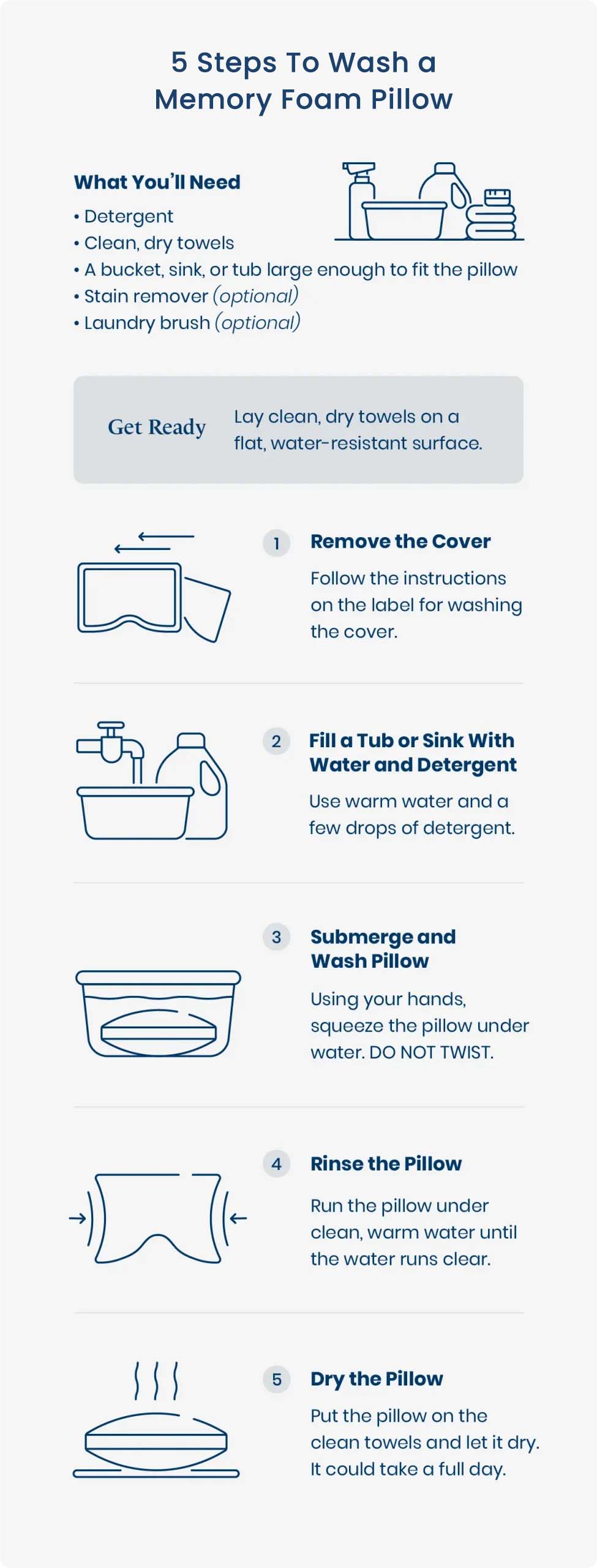
Gather these exact items before starting—substitutions risk damage:
- Silk-safe detergent (like Woolite) or unscented eco dish soap (1 tsp per gallon)
- White distilled vinegar (never apple cider or colored vinegar)
- Baking soda (sodium bicarbonate only—no scented variants)
- Handheld vacuum with upholstery nozzle (essential for debris removal)
- Soft white microfiber cloths (colored fabrics may bleed dyes)
- Large basin (bathtub or sink—no metal containers that react with vinegar)
- Portable fan (set to low-medium speed for even drying)
Choose a dry, warm day with 40-60% humidity. Set up your drying station indoors on a cooling rack or mesh table—direct sunlight degrades foam chemistry within hours.
Weekly Maintenance That Prevents Deep Cleaning
Vacuum Pillow Surfaces Thoroughly
Run the handheld vacuum’s upholstery attachment slowly across every inch of the pillow. Focus on seams and crevices where dead skin and hair accumulate. Use overlapping passes for 2 full minutes per side. This removes 90% of surface debris before it penetrates the foam core.
Neutralize Odors With Baking Soda
Sprinkle a 1/8-inch layer of baking soda evenly over both sides. Let sit 2 hours (overnight for pet odors). Vacuum until zero powder remains—residual soda attracts moisture later. This step eliminates 75% of odor-causing bacteria without adding moisture.
Air Out Core Moisture
Leave the pillow uncovered in a cross-ventilated room for 3 hours. Place near an open window with a fan blowing across it. Your hand should feel no coolness when pressed into the foam—this confirms trapped sweat has evaporated.
Spot Clean Stains in Under 15 Minutes
Blot fresh spills immediately with a dry microfiber cloth—rubbing pushes liquids deeper. Mix 1 tsp silk-safe detergent in 1 cup lukewarm water. Dampen a corner of a white cloth (wring until nearly dry), then work from the stain’s edge inward using circular motions. Rotate to clean cloth sections after every 3 passes. Rinse by dabbing with a water-only cloth. Dry the spot with a cool hair dryer held 12 inches away for 10 minutes. Check for dampness by pressing your palm firmly for 5 seconds—if coolness remains, continue drying.
Surface Stripping Method: Safest Deep Clean
This minimal-moisture technique works for 95% of cleaning needs.
Mist With Vinegar Solution
Spray a 1:3 white vinegar-to-water mix until the surface glistens lightly—never soak. The vinegar breaks down oxidized body oils without saturating the foam. Wait 8 minutes for the solution to penetrate surface layers.
Extract Lifted Contaminants
Press a dry towel firmly across the entire surface. Lift straight up—do not rub. Repeat with fresh towel sections until no grime transfers. You’ll see visible yellow residue on the towels proving oil removal.
Finish With Baking Soda
Apply a thin, even layer of baking soda. Rest 2.5 hours, then vacuum thoroughly. The soda absorbs residual vinegar and neutralizes odors at a molecular level. Air-dry under a fan for 5 hours, flipping once at the 2.5-hour mark.
Controlled Submersion: For Extreme Sweat Buildup
Use this only when surface methods fail on pillows saturated for 6+ months.
Submerge Without Compression
Fill a tub with lukewarm water (max 85°F/30°C) and 1 tsp detergent per gallon. Gently press the pillow under water until fully saturated—never force it down. Soak exactly 18 minutes. Longer submersion causes waterlogging.
Squeeze Out Contaminants
Place palms flat on the foam and rhythmically compress/expand for 90 seconds. This pumps soapy water through the cells to dislodge deep-set oils. Drain water and refill with clean lukewarm water. Repeat squeezing until runoff is clear (usually 3 rinses).
Remove Water Safely
Lay the pillow flat on two dry towels. Place another towel on top and press down with your palms—no twisting. Replace wet towels and repeat until no water seeps out. Reshape edges with your hands while damp.
Drying Protocol: Avoid Mold in 24 Hours

Position for Maximum Airflow
Place the pillow horizontally on a mesh drying rack. Position a fan 18 inches away blowing across (not down on) the surface. Rotate the pillow 90° every 2 hours to expose all sides equally. Never stack pillows—this traps moisture between layers.
Verify Complete Dryness
After 12 hours, press your palm firmly into the pillow’s thickest section for 10 seconds. If your hand feels cool or damp, continue drying. Total drying time ranges from 14–22 hours depending on pillow density. Critical check: Insert your hand between the foam and any fabric cover—if coolness persists, mold will develop within 48 hours.
Eliminate Stubborn Odors With Proven Hacks
Enzyme Treatment for Biological Stains
For urine or heavy sweat stains, spray an enzyme cleaner directly on the affected area. Wait 12 minutes (longer degrades foam), then blot with vinegar-dampened cloth. Follow with baking soda treatment. Enzymes break down protein-based odors that vinegar can’t touch.
Charcoal Absorption Trick
Place the pillow inside a large cotton pillowcase with 4 activated charcoal briquettes. Seal the case and leave in a shaded area for 36 hours. Charcoal pulls out embedded odors without adding moisture—ideal for pillows that feel dry but still smell musty.
When Deep Cleaning Fails: Replacement Signs
Deep Clean Every 8 Months If:
- Yellow discoloration covers 30%+ of the surface
- You wake with itchy eyes or congestion
- Pillow retains a damp smell after 24-hour drying
Replace Immediately When:
- Foam crumbles like styrofoam when pinched
- Indentations remain after 8 seconds (healthy foam rebounds in 3–5 sec)
- Black specks appear deep in the foam (mold penetration)
- Allergy symptoms worsen after cleaning
Prevention System That Cuts Deep Cleaning in Half
Double-Layer Protection
Use a zippered waterproof pillow protector under your regular case. Wash the protector weekly in cold water—this barrier catches 95% of sweat before it reaches the foam. Bamboo covers add moisture-wicking properties but require bi-weekly washing.
Nightly Habits That Extend Lifespan
- Apply a light dusting of cornstarch to your neck before bed to absorb sweat
- Sleep with hair completely dry—damp strands transfer moisture
- Rotate the pillow 180° every Monday to distribute wear evenly
- Ban pets from the bed or provide them separate memory foam beds
Troubleshooting Guide: Fix Common Mistakes
| Problem | Cause | Solution |
|---|---|---|
| Pillow feels stiff after drying | Vinegar residue crystallized | Repeat surface stripping with 50% less vinegar |
| Persistent yellow stains | Oxidized oils penetrated deep | Pre-treat with enzyme spray before vinegar mist |
| Foam lost all resilience | Over-soaking during submersion | Replace pillow—structural damage is irreversible |
| Musty smell returns in days | Incomplete drying in core | Extend drying time by 8+ hours; use dehumidifier |
Your Deep Clean Checklist: 9 Critical Steps
- [ ] Verified care label allows water exposure
- [ ] Removed and laundered all pillow covers
- [ ] Vacuumed entire pillow surface for 2+ minutes
- [ ] Used lukewarm (not hot) water below 85°F
- [ ] Limited submersion to 18 minutes max
- [ ] Extracted water by pressing—not wringing
- [ ] Dried flat with continuous fan airflow
- [ ] Confirmed zero dampness in core before reuse
- [ ] Reapplied protective covers immediately
Mastering how to deep clean memory foam pillow properly transforms a chore into a 30-minute maintenance ritual. By avoiding moisture overload and heat exposure, you’ll keep your pillow hygienic and supportive for its full 4-year lifespan—saving $150+ in premature replacements. The key is respecting memory foam’s delicate chemistry: treat it like museum-quality art, not a cotton pillow. Within 24 hours of your first proper deep clean, you’ll notice deeper sleep as dust mites and allergens vanish. Start tonight with the surface stripping method—your neck (and wallet) will thank you for years.

